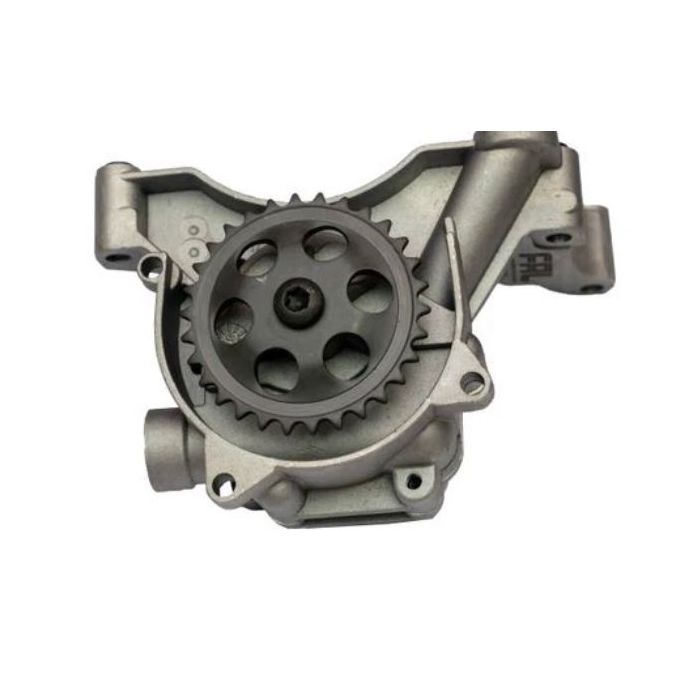Increase the lifespan of your clp engine with regular care.
Increase the lifespan of your clp engine with regular care.
Blog Article
Just How a Clp Engine Can Improve Efficiency in Numerous Industries
The advent of CLP engines notes a considerable change in operational performance across various markets, driven by their capability to optimize gas usage and reduce downtime. As companies significantly prioritize sustainability along with effectiveness, the function of CLP engines ends up being also a lot more essential.
Overview of CLP Engines
CLP engines, or Continual Liquid Propellant engines, stand for a significant advancement in propulsion technology, specifically for area applications. These engines utilize a continual feed system that enables for the sustained expulsion of propellant, leading to improved performance and performance contrasted to conventional solid or hybrid propulsion systems. By maintaining a constant flow of fluid propellant, CLP engines can achieve extra precise drive control, which is vital for navigating spacecraft in various mission scenarios.
The design of CLP engines integrates sophisticated products and ingenious gas administration systems. clp engine. This leads to reduced weight and raised integrity, important aspects for long-duration space objectives. Additionally, the continual procedure lessens the danger of burning instability, a typical difficulty in standard rocket engines.

Benefits in Production
The manufacturing of Continual Fluid Propellant (CLP) engines presents several notable benefits that enhance both performance and cost-effectiveness. One of the key benefits is the streamlined production procedure, which reduces the complexity connected with traditional propulsion systems. By using fluid propellant, makers can attain greater accuracy in engine efficiency, leading to enhanced energy outcome and reduced waste.
In addition, CLP engines facilitate a greater level of modularity, permitting for easier integration right into different manufacturing lines. This versatility can significantly reduce lead times and boost total operational flexibility. Making use of CLP modern technology likewise often tends to lessen the need for comprehensive upkeep due to fewer relocating parts, which equates into minimized downtime and functional prices.

Applications in Logistics
Leveraging Constant Fluid Propellant (CLP) engines in logistics supplies substantial advantages in functional efficiency and reliability. These engines offer a durable option for different transportation requirements, enabling the smooth activity of products throughout large ranges. The integral style of CLP engines permits constant he has a good point power result, which equates right into smoother and much more foreseeable transport routines.
One of the crucial applications of CLP engines in logistics is in sturdy freight transportation, where they can drive both ground and airborne automobiles. Their capacity to maintain high performance under differing load problems makes sure that shipment timelines are satisfied, therefore improving customer satisfaction. Furthermore, CLP engines can be integrated into automated logistics systems, facilitating real-time tracking and optimizing route planning.
Additionally, the durability of CLP engines lowers upkeep downtime, allowing logistics companies to maximize their operational capacities. This is especially beneficial in warehousing procedures, where performance in managing and delivering products is crucial. As logistics remains to advance, the combination of CLP engines represents a forward-thinking method that not just improves efficiency however also sustains the sector's expanding demands for integrity and rate.
Effect on Power Effectiveness
How do Continual Liquid Propellant (CLP) engines improve energy effectiveness in transportation? CLP engines use a constant circulation of fluid fuel, maximizing combustion procedures and preserving a steady thrust result. This design decreases power losses connected with traditional combustion engines, where fuel distribution can differ and lead to ineffectiveness.
The constant procedure of CLP engines allows for a more reliable thermal cycle, causing higher particular impulse compared to conventional engines. clp engine. This translates to reduced fuel intake for the same amount of job done, substantially decreasing functional costs throughout various transportation sectors, including aviation and maritime industries
Furthermore, the capability of CLP engines to preserve ideal performance under varying load problems decreases the requirement for frequent acceleration and slowdown, further enhancing anchor fuel performance. Enhanced energy efficiency not just adds to cost savings but additionally brings about lower greenhouse gas exhausts, aligning with worldwide sustainability goals.
Future Trends and Innovations
Emerging advancements in Continual Liquid Propellant (CLP) engine modern technology guarantee to reinvent the landscape of transport effectiveness and sustainability. As sectors pivot toward greener alternatives, CLP engines stand at the leading edge, integrating ingenious products and design methods that boost performance while lessening ecological effect.
Among one of the most promising fads is the adoption of hybrid systems that integrate CLP engines with renewable power sources. This synergy can enhance gas intake and decrease exhausts, aligning with worldwide sustainability objectives. Furthermore, innovations in computational liquid characteristics (CFD) are facilitating the style of more aerodynamically effective engines, causing decreased drag and boosted gas effectiveness.
In addition, the development of wise monitoring systems is set to enhance functional performances. These systems utilize information analytics and IoT innovation to maximize engine efficiency in real-time, read making certain that the engines operate within their most reliable parameters.
As research remains to discover different propellant formulas-- such as biofuels and artificial fuels-- the future of CLP engines looks promising. By utilizing these developments, markets can not only improve their efficiency however likewise add considerably to a cleaner, more lasting future in transport.
Final Thought
Finally, CLP engines stand for a considerable development in effectiveness throughout numerous sectors. Their ability to maximize fuel usage and decrease functional expenses, incorporated with a constant feed system, enhances power result and functional reliability. The combination of advanced materials and less relocating components reduces maintenance needs, while alignment with sustainability objectives settings CLP engines as a pivotal technology for the future. Continued innovation in this field assures additional renovations in performance and ecological efficiency.
Report this page